Managing Events in CSV Files
Manage event data for My Calendar in CSV files.
Importing Data from a CSV File
Import the event data from CSV files.
-
Create a CSV file to import data.
For information on items that can be managed using CSV files, refer to the CSV format in Calendars. -
Click the "User name" in the header.
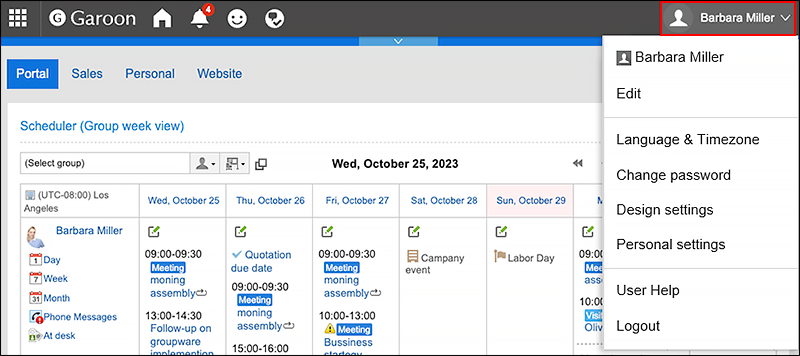
-
Click Personal Settings.
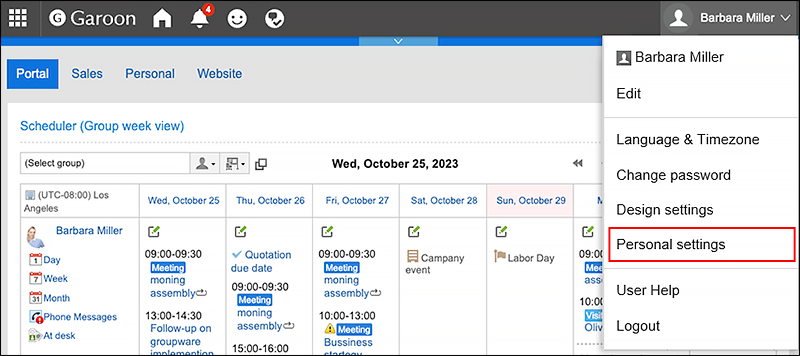
-
Click "Common settings".
-
Click Calendar.
-
Click My calendar settings.
-
On the "My calendar settings" screen, click Import events data.
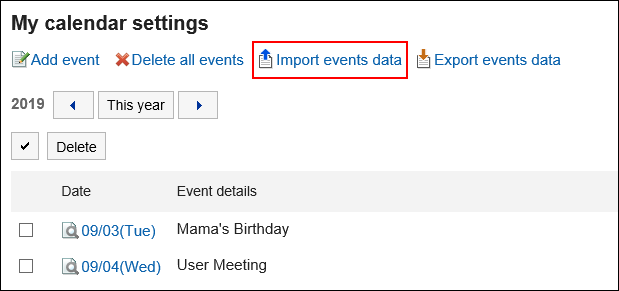
-
On the screen to "import events step 1/2", select the CSV file that you created in step 1.
-
Set the data to import, and click Next.
The setting fields are as follows:
- Character encoding:
Encodes data from a CSV file with the selected character code.
The following character encoding can be selected:- Unicode (UTF-8)
- Japanese (Shift-JIS)
- ASCII
- English (Latin1)
- Simplified Chinese (GBK/GB2312)
- Thai (TIS-620)
- Skip the first row:
If the header row contains information other than data such as an item name and a comment, select "Yes".
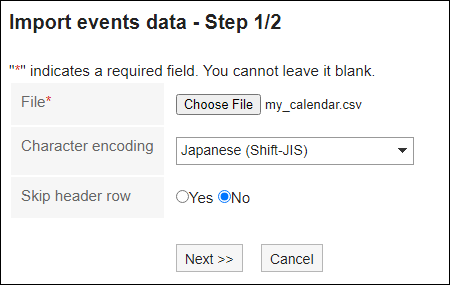
- Character encoding:
-
On the screen to "import events step 2/2", check the contents of the CSV file, and click Import.
Exporting Data to a CSV File
Export the e-mail data to a CSV file.
-
Click User name in the header.

-
Click Personal Settings.

-
Click "Common settings".
-
Click Calendar.
-
Click My calendar settings.
-
On the "My calendar settings" screen, click Export events data.
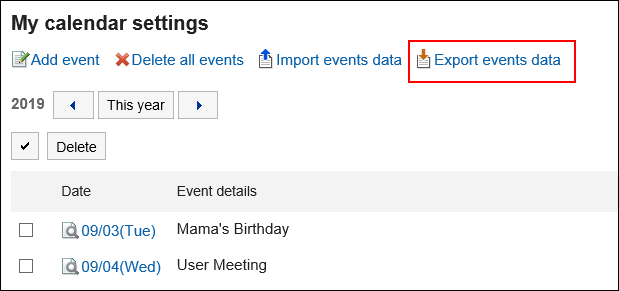
-
On the screen to export events, set the required items for the exported data.
The setting fields are as follows:
- Period to export:
Specify all periods or a period to export. - Character encoding:
Encodes data from a CSV file with the selected character code.
The following character codes can be selected.- Unicode (UTF-8)
- Japanese (Shift-JIS)
- ASCII
- English (Latin1)
- Simplified Chinese (GBK/GB2312)
- Thai (TIS-620)
- Include header row:
To export an item name to the header row of a CSV file, select "Yes".
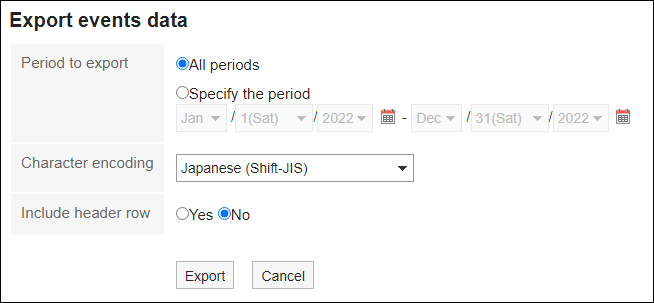
- Period to export:
-
Confirm your settings and click Export.
-
Save the file with a function provided by your Web browser.